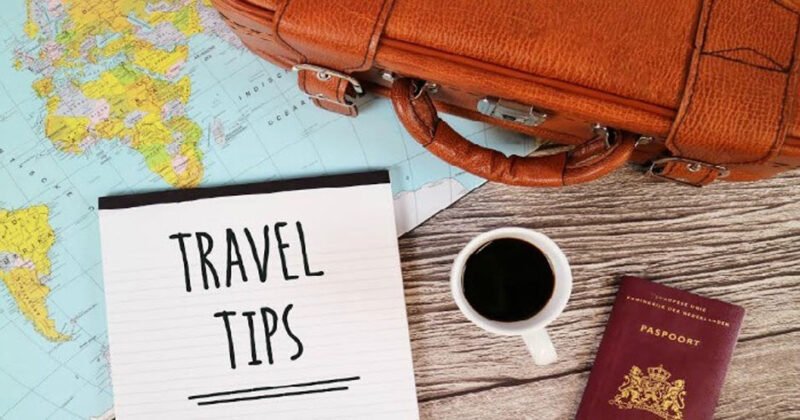Remember when planning a trip meant grabbing a Lonely Planet guide and just showing up? Yeah, those days are long gone. Travel planning now involves way more steps than it used to, which sounds annoying but actually makes things safer. I mean, would you rather have more information or less when you’re heading somewhere unfamiliar? The answer seems obvious, but it does mean you can’t just wing it anymore like people did back in the day.
Advisory Systems Actually Make Sense Now
So governments used to just say “dangerous, don’t go” or nothing at all. Not super helpful, right? Now they’ve got these tiered systems that actually explain what’s going on. The U.S. uses levels 1 through 4, with level 1 being basically “you’re fine, just use common sense” and level 4 being “seriously, do not go there.”
What’s really changed though is they break things down by region now. A country might be totally safe in the capital but sketchy near certain borders. That’s where checking travel advisories and warnings becomes actually useful instead of just paranoid. They’ll tell you if it’s crime you need to worry about, or political stuff, or health issues, or whatever. You can decide for yourself what risks you’re okay with instead of just getting a vague “be careful.”
Your Phone Became a Safety Device
This one’s pretty obvious but still worth mentioning. Travel safety apps are everywhere now and some of them are genuinely useful. They’ll ping you if something’s happening near where you are – protests, weather problems, that kind of thing. Some pull data from government sources and mix it with reports from other travelers, which gives you a more complete picture than either source alone.
The offline feature is clutch too. Because let’s be real, your data plan doesn’t always work great internationally, and WiFi can be spotty. Having emergency contacts and maps saved locally means you’re not completely screwed if you lose connection at the wrong time.
Registration Programs Are Worth The Hassle
Okay, this one sounds boring but hear me out. Programs like S.T.E.P let you register where you’re going with your embassy. Takes maybe 20 minutes, costs nothing. Most people skip it because it feels like overkill.
But if something goes wrong – and I mean really wrong, like natural disasters or political chaos – the embassy knows you’re there and can actually help. They contact registered people first during evacuations. Your family back home can reach the embassy if they can’t get hold of you and they’re worried. It’s insurance you hope you never use, but when you need it, you really need it. A friend of mine got caught in flooding in Southeast Asia last year and the embassy contacted him directly because he’d registered. Made a huge difference.
Social Media Fills In The Gaps
Guidebooks are fine, government sites have their place, but social media is where you get the real story. Facebook groups for specific cities or countries will tell you about the taxi driver scam at the airport that started last week, or which neighborhoods have gotten sketchy recently, or where not to eat because people keep getting food poisoning. That’s current information you can’t get anywhere else.
Twitter’s good for breaking news when things go sideways fast. Reddit has city-specific communities where locals answer questions. Instagram shows you what places actually look like right now, not the promotional photos from five years ago. You’ve gotta use some judgment about what sources to trust, obviously. But combined with official resources, it gives you a way more realistic picture of what you’re walking into. Some random blogger’s opinion matters less than dozens of recent travelers saying the same thing.
Insurance Isn’t Optional Anymore
Used to be only nervous travelers bought insurance. Now it’s basically stupid not to have it, especially for longer or more expensive trips. Modern policies cover way more than lost bags – medical emergencies, evacuations, trip cancellations, all that stuff.
Here’s something most people don’t know: insurance companies look at government advisories when deciding coverage. Buy before a warning gets issued and you’re covered. Buy after and you might not be, or you’ll have limited coverage. So there’s actually a reason to book insurance early beyond just checking it off your list. Medical stuff is the big one though. Hospital stays abroad can cost insane amounts of money without proper coverage. Like, tens of thousands for something that would be covered at home. Medical evacuation flights cost even more. Your regular health insurance probably doesn’t cover international care, or covers very little of it.
The good policies also give you someone to call 24/7 who speaks English and can help coordinate things when you’re panicking. That’s worth the cost by itself honestly. Finding a doctor in a country where you don’t speak the language while you’re sick or injured is not a fun experience.
It’s Different But Not Worse
Yeah, travel planning takes more work now than it did twenty years ago. You’ve got more things to check, more apps to download, more boxes to tick. But you also have access to information travelers in previous generations would’ve killed for. The key is building these steps into your routine early so you’re not scrambling at the last minute. Check advisories when you’re first considering destinations. Download apps a few weeks before you leave. Register with your embassy when you book flights. Buy insurance early.
None of this is about being paranoid or scared to travel. It’s about being smart so you can actually enjoy yourself instead of worrying or dealing with preventable problems. The travelers who do this prep work consistently have better trips with fewer surprises. That seems worth a few extra hours of planning to me.









